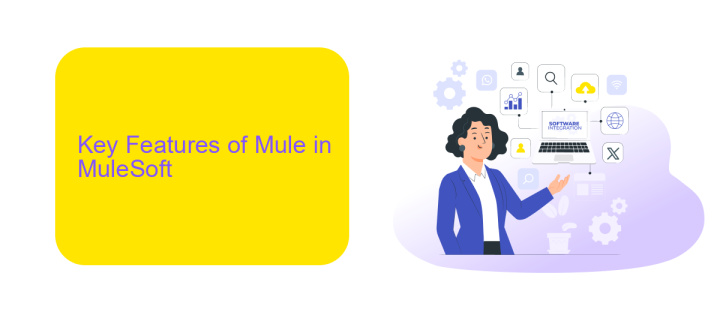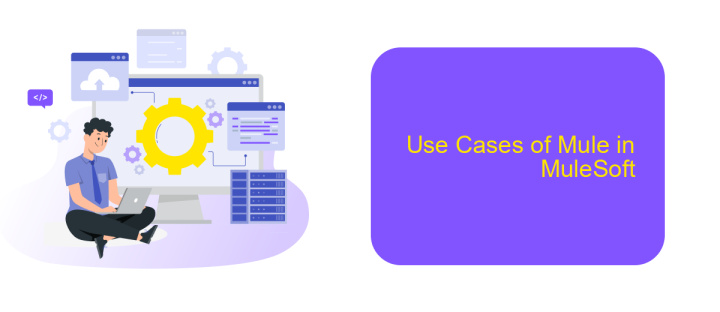What is Mule in MuleSoft
Mule is the runtime engine of the MuleSoft Anypoint Platform, designed to seamlessly connect applications, data, and devices. It enables developers to integrate diverse systems and services, whether on-premises or in the cloud. This article explores Mule's core functionalities, architecture, and how it simplifies complex integration tasks, making it an essential tool for modern enterprises.
Introduction to Mule in MuleSoft
Mule is the runtime engine of Anypoint Platform, a unified integration platform that allows developers to connect applications, data, and devices with ease. MuleSoft, the company behind Mule, provides a comprehensive suite of tools designed to streamline the integration process, making it simpler to connect disparate systems and services. Mule's robust architecture enables seamless communication between various applications, ensuring data flows smoothly and efficiently across the enterprise.
- Connect applications, data, and devices with ease
- Unified integration platform
- Streamline the integration process
- Seamless communication between systems
- Efficient data flow across the enterprise
One of the key advantages of using Mule in MuleSoft is its ability to work with other integration services like ApiX-Drive. ApiX-Drive aids in setting up integrations by offering a user-friendly interface and pre-built connectors for various applications. This synergy allows businesses to automate workflows and enhance productivity without delving into complex coding or extensive configuration. Together, MuleSoft and ApiX-Drive provide a powerful solution for modern integration needs.
Key Features of Mule in MuleSoft

Mule in MuleSoft is designed to streamline integration processes, offering a range of key features that enhance efficiency and flexibility. One of the standout features is its ability to seamlessly connect various applications, data sources, and APIs, enabling businesses to automate workflows and improve operational efficiency. The platform supports a wide variety of integration patterns, including real-time, batch, and event-driven integrations, ensuring that it can meet the diverse needs of different organizations.
Another significant feature of Mule is its robust API management capabilities, which allow users to design, build, and manage APIs with ease. This includes features like API versioning, security, and analytics, which provide comprehensive control over API lifecycles. Additionally, MuleSoft integrates with services like ApiX-Drive, which simplifies the integration process by offering pre-built connectors and templates for popular applications. This not only reduces the time and effort required for integration but also ensures that businesses can quickly adapt to changing technological landscapes.
Benefits of Using Mule in MuleSoft

Mule in MuleSoft offers a range of benefits that make it a powerful tool for integrating various applications and systems. By leveraging Mule, businesses can streamline their processes and enhance their operational efficiency.
- Scalability: Mule can handle a large number of transactions and data, making it suitable for businesses of all sizes.
- Flexibility: It supports various integration patterns and protocols, allowing seamless connectivity between different applications.
- Cost-Effective: By reducing the need for custom code, Mule lowers development costs and shortens project timelines.
- Real-Time Data Processing: Mule enables real-time data integration, ensuring that businesses have up-to-date information for decision-making.
- Enhanced Security: Mule provides robust security features, ensuring that data is protected during integration processes.
For example, services like ApiX-Drive can further enhance the capabilities of Mule by offering easy-to-use tools for setting up integrations. With ApiX-Drive, businesses can automate workflows and synchronize data between various platforms without the need for extensive coding knowledge. This combination of Mule and ApiX-Drive ensures a seamless, efficient, and secure integration experience.
Use Cases of Mule in MuleSoft

Mule in MuleSoft is a versatile integration platform that simplifies the connection of various systems and applications. It is particularly useful for businesses that need to streamline their operations by integrating disparate systems and automating workflows. MuleSoft's Mule allows organizations to build, deploy, and manage APIs and integrations with ease.
One of the primary use cases for MuleSoft's Mule is in automating data flows between different applications. For example, businesses can use Mule to synchronize data between CRM systems, ERP systems, and other enterprise applications. This ensures that all systems are up-to-date and reduces the need for manual data entry.
- Seamless integration of cloud and on-premise applications
- Real-time data synchronization between multiple systems
- Automated workflow creation and management
- API management and monitoring
- Connecting SaaS applications with enterprise systems
Additionally, tools like ApiX-Drive can complement MuleSoft by providing pre-built connectors and easy-to-use interfaces for setting up integrations quickly. By leveraging both MuleSoft and ApiX-Drive, businesses can achieve efficient and scalable integration solutions, enabling them to focus on their core activities while ensuring seamless data flow across their systems.
Getting Started with Mule in MuleSoft
Getting started with Mule in MuleSoft is a straightforward process that allows you to connect various applications and data sources seamlessly. First, you need to install Anypoint Studio, MuleSoft's Eclipse-based integration development environment. Once installed, you can start creating your first Mule application by dragging and dropping connectors, components, and transformers onto the canvas. This visual approach simplifies the process of building integration flows, making it accessible even for those new to the platform.
To further streamline your integration efforts, consider using ApiX-Drive, a service that helps automate data transfer between different applications. By integrating ApiX-Drive with MuleSoft, you can easily set up automated workflows that sync data across various platforms, reducing manual effort and minimizing errors. With these tools, you can quickly build robust and scalable integrations, ensuring that your systems work together efficiently and effectively.
FAQ
What is Mule in MuleSoft?
How does Mule handle integration?
What are the key features of Mule?
Can Mule be used for real-time data processing?
Is there a way to automate and simplify the integration setup in Mule?
Time is the most valuable resource in today's business realities. By eliminating the routine from work processes, you will get more opportunities to implement the most daring plans and ideas. Choose – you can continue to waste time, money and nerves on inefficient solutions, or you can use ApiX-Drive, automating work processes and achieving results with minimal investment of money, effort and human resources.

